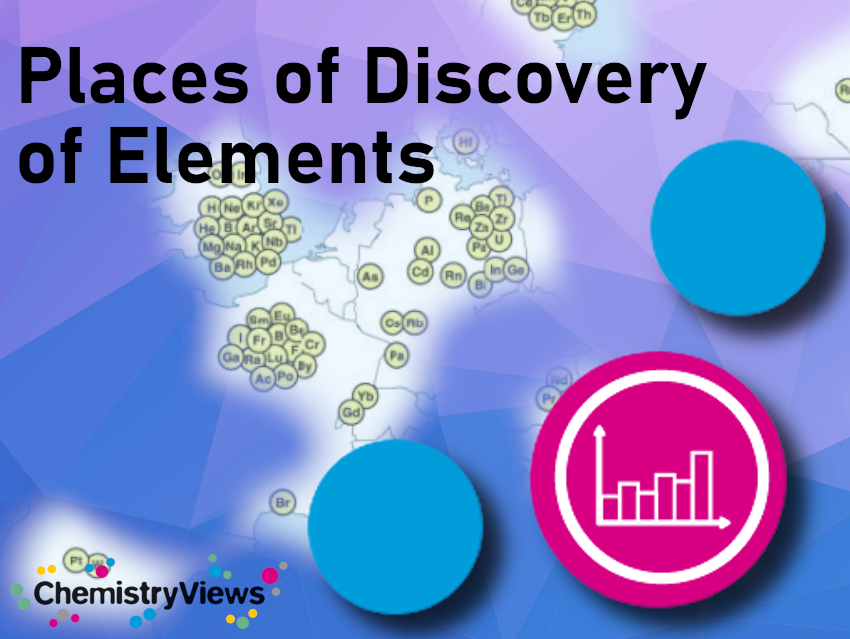Scientific chemistry has its roots in the European Enlightenment. All 92 naturally occurring elements were discovered and identified in Europe. The map below shows that England, France, and Sweden played central roles, while research in Germany was conducted across various regional centers.
With the advent of atomic research, the focus on discovering artificial elements shifted to the USA (Glenn Theodore Seaborg (1912–1999, University of California, Berkeley, and Albert Ghiorso (1915–2010, Lawrence Berkeley National Laboratory), later joined by Russia (Dubna) and Germany (Darmstadt).
.gif)
elements discovered by 2007
[update]
In 2017, element 113 became the first element discovered in Asia. It was named nihonium after Nihon, a Japanese name meaning ‘land of the rising sun’.
Source
- Hans-Jürgen Quadbeck-Seeger, World of the Elements, Elements of the World, Wiley-VCH Verlag GmbH & Co, KGaA, Weinheim, 2007. https://doi.org/10.1002/9783527611577
Print ISBN: 9783527320653, Online ISBN: 9783527611577


